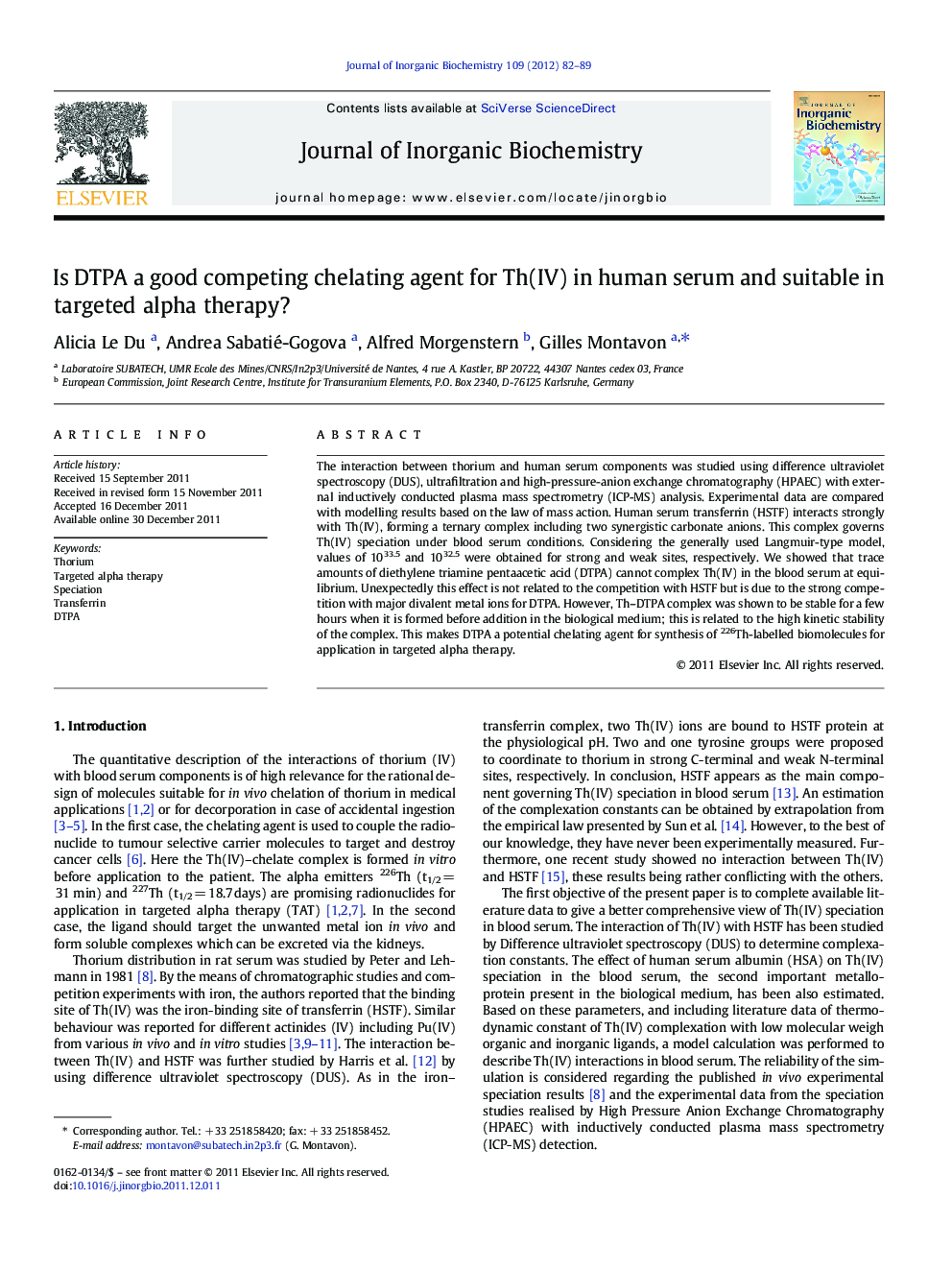| Article ID | Journal | Published Year | Pages | File Type |
|---|---|---|---|---|
| 1317783 | Journal of Inorganic Biochemistry | 2012 | 8 Pages |
The interaction between thorium and human serum components was studied using difference ultraviolet spectroscopy (DUS), ultrafiltration and high-pressure-anion exchange chromatography (HPAEC) with external inductively conducted plasma mass spectrometry (ICP-MS) analysis. Experimental data are compared with modelling results based on the law of mass action. Human serum transferrin (HSTF) interacts strongly with Th(IV), forming a ternary complex including two synergistic carbonate anions. This complex governs Th(IV) speciation under blood serum conditions. Considering the generally used Langmuir-type model, values of 1033.5 and 1032.5 were obtained for strong and weak sites, respectively. We showed that trace amounts of diethylene triamine pentaacetic acid (DTPA) cannot complex Th(IV) in the blood serum at equilibrium. Unexpectedly this effect is not related to the competition with HSTF but is due to the strong competition with major divalent metal ions for DTPA. However, Th–DTPA complex was shown to be stable for a few hours when it is formed before addition in the biological medium; this is related to the high kinetic stability of the complex. This makes DTPA a potential chelating agent for synthesis of 226Th-labelled biomolecules for application in targeted alpha therapy.
Graphical abstractTh(IV) chelation in blood serum is studied. Human serum transferrin governs Th(IV) speciation. This was shown both experimentally and theoretically based on the law of mass action. The high kinetic stability of Th–DTPA complex allows use of the ligand for synthesis of 226Th labelled biomolecules for targeted alpha therapy.Figure optionsDownload full-size imageDownload as PowerPoint slide
